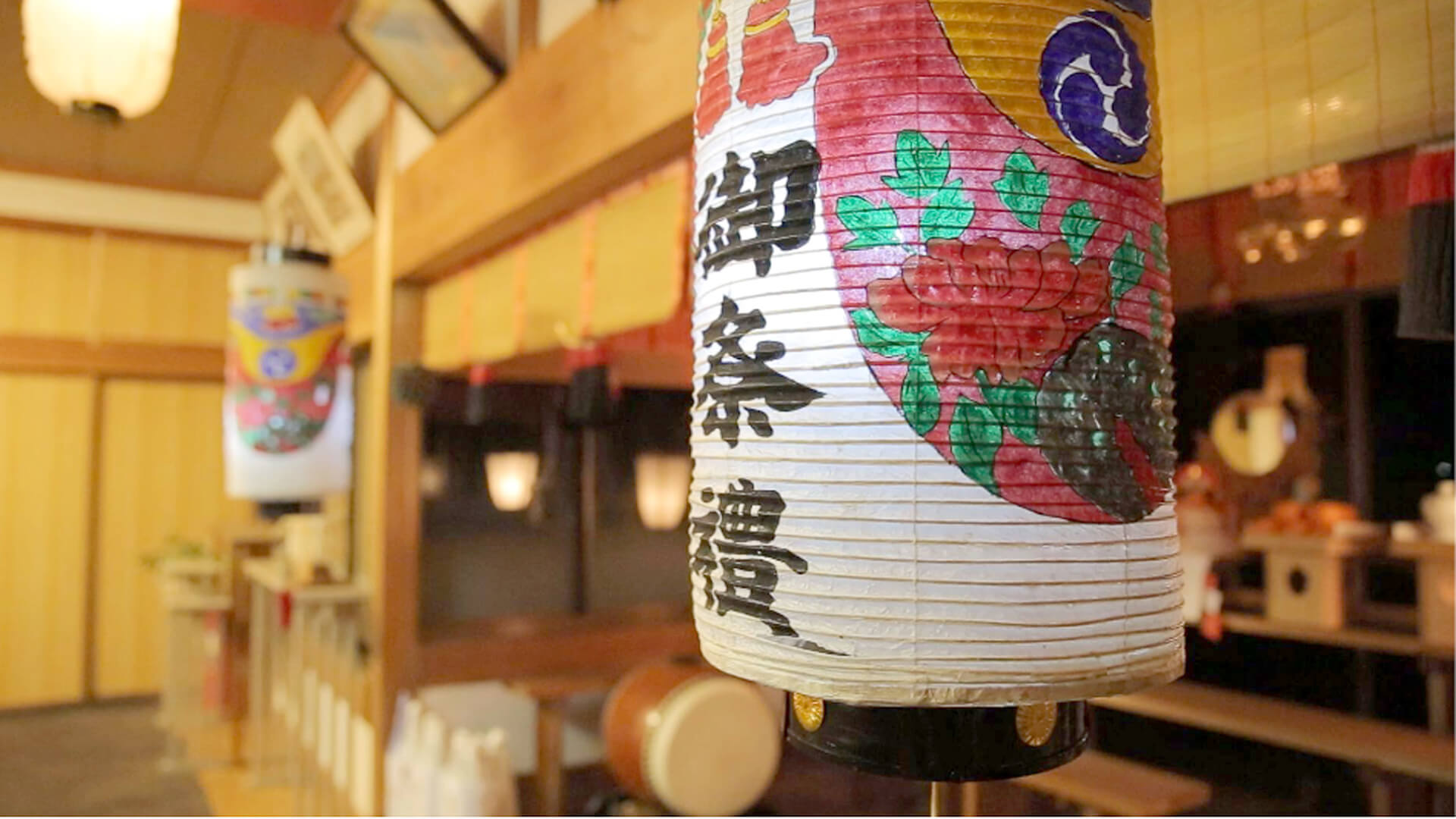




Kawamata Shrine was merged into Shinmeisha Shrine from 1661 to 1662, and merged into Okabuto Shrine on April 11, 1908. But, on October 16 in 1951, after a consensus from parishioners, and the completion of the arrangements of shrine buildings, the shrine was moved back to its former site (the former Shinmeisha Shrine) and restored. The present Kawamata Shrine enshrines Ohiko no Mikoto, the forefather of the Kawamata Clan.
Held on the first or second Sunday of October
This is the biggest festival of the year and is celebrated by all the local parishioners. Yunohana rites are performed at the Autumn Festival, Spring Festival, Mikuwa Matsuri, and Niiname-sai. In the Yunohana rite, a priest encloses a hearth with sacred ropes and bamboo, boils water in an iron pot and offers it to the god. Afterwards, a Yunohana-uji parishioner soaks bamboo grass in the boiling water and purifies himself by sprinkling the hot water mist on his body. Next, the parishioner sprinkles hot water mist on worshippers with the bamboo grass two times. While enveloped by the mist, worshippers pray for the well-being of their families, health and safety, and bountiful harvests. At the “Naorai” party which follows, participants share round rice cakes offered to the shrine’s god along with the god’s rice wine. In addition, the neighborhood council holds events including a parade in which children carry a portable shrine and an evening karaoke competition.
Held on the second Sunday of November.
Rice, vegetables, and fruits harvested during the year are offered to the god in appreciation for the rice harvest and as a prayer for a bountiful harvest the following year, the well-being of families, and health and safety. Also, similar to the Spring Festival, Autumn Festival, and Mikuwa Matsuri, the Yunohana rite is held.
Held from December 31 to January 1
Worshippers express their gratitude for the passing year.
Amazake is served to worshippers in the shrine grounds.
Held on the second Sunday in February.
Festival of prayer held before commencing work in the farm fields. People pray for a bountiful harvest, the well-being of their families, and health and safety. Also, similar to the Spring Festival, Autumn Festival, and Niiname-sai, the Yunohana rite is held.
Held on the first or second Sunday of March.
Originally, the festival was a shrine ceremony held on the first day of the horse of March. Presently, it is held on the first or second Sunday of the month.
Parishioners who are in their unlucky years (ages 19 and 33 for women; ages 25, 42, and 61 for men in kazoedoshi (the traditional Japanese system of calculating age)) lay a 1-sho quantity (approx. 1.5 kg) of rice on a tray, place a 2-sho quantity (approx. 3 kg) of round rice cakes on top of the rice, and then dedicate the items to the shrine together with a prayer fee.
After the prayer, worshippers receive talismans of the prayer and the lower part of the round rice cakes. Worshippers divide the rice cakes into pieces and distribute them to their neighbors and relatives.
10-30 Hirata-honmachi 1-chome, Suzuka City, Mie Prefecture 513-0848 Japan